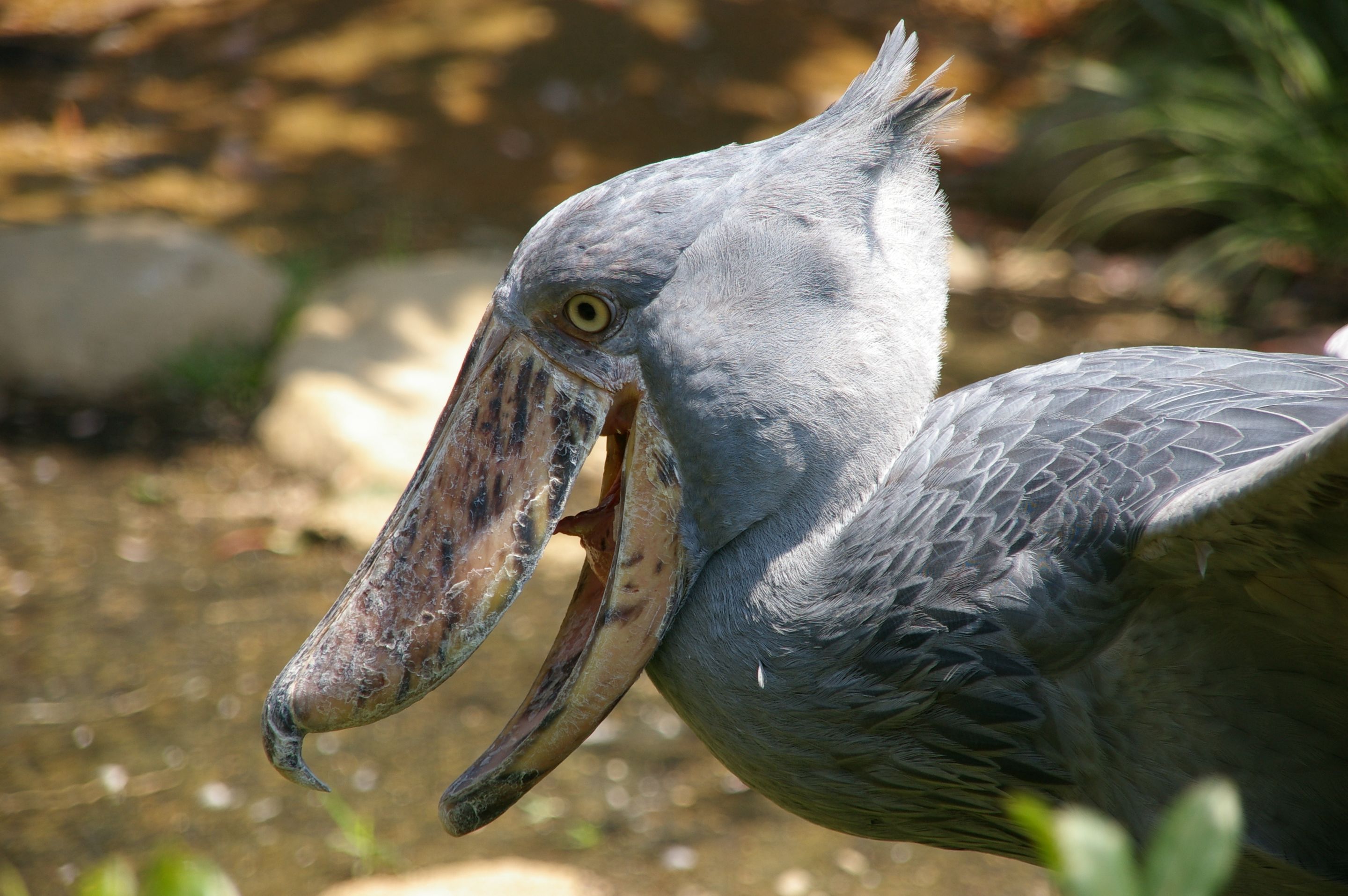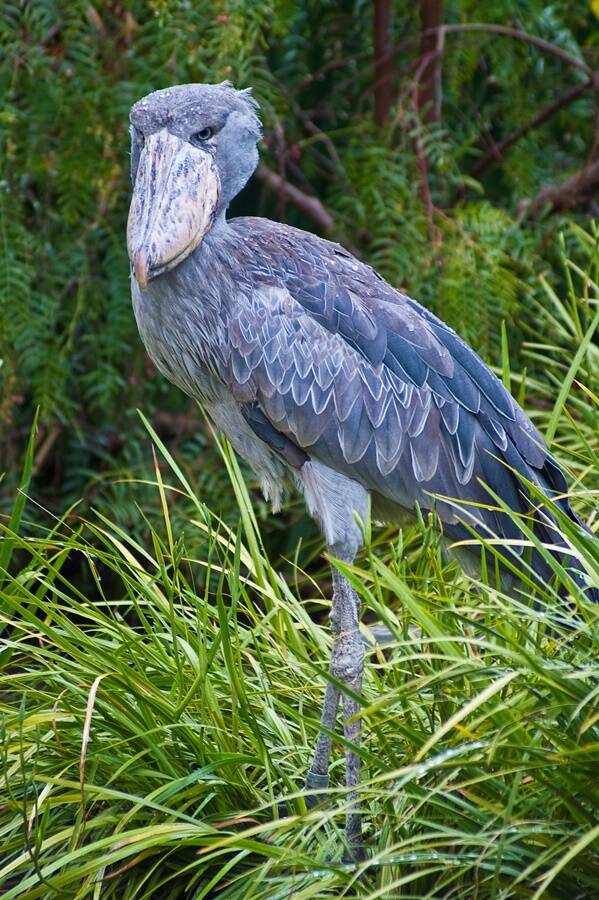

Shoebills, like pelicans and other storks, practice urohidrosis to keep cool. Shoebill storks have large bills that help them to catch and eat fish. At the same time, water and vegetation that was taken up at the same time as the prey item spill out from the edges of the bill. The shoebill bird then holds up its head and grinds the sharp edges of its bill together to decapitate its prey.

The bird then dives down, the bill first, and ambushes its prey.

Once the birds have spotted their prey, they lunge or fall forward onto the prey with their wings spread. The size of their bill helps these birds to strike their prey in a unique technique known as a ‘collapse.’ The birds stand in the water motionless, looking for food. It also has a razor-sharp, curved hook at the end that is used to spear its prey. Its large bill ranges from 7.8 – 9.5 in (20 – 24 cm) long and 4 – 4.8 in (10 – 12 cm) wide. Shoebill birds have enormous bills that are shaped like a shoe and are an adaptation for catching and holding the large, slippery fish that it preys on. The shape of a bird’s beak is designed for eating particular types of food and offers a big clue as to what the primary source of food is. However, what we do know demonstrates some amazing biological concepts! Shoe-shaped Bill It is surprising then that we know relatively little about them compared to other species. They were first described in writing that dates back as far as ancient Egypt. Humans have known about shoebill storks for a really long time. Interesting Insights from the Shoebill Stork! Fledging occurs at 95 days, and by 125 days, the chicks are independent. After they reach a month in age, the parents will start to leave prey items in the nest for the young birds to swallow. When they are born, the parents take turns feeding the chicks mashed up food. However, the large bill that these birds are known for doesn’t begin to show until they are a month old. Shoebill chicks are covered in a thick, silvery-grey down and already have a wide gape. Both parents will turn the eggs frequently using their feet or their bills. The female will lay two to three eggs, and these incubate for 30 days. They are monogamous birds that share parental responsibilities. Shoebill storks reach sexual maturity at three to four years. They have enormous wings that can span up to eight ft, which they use for soaring. Their piercing eyes are yellow or a white/grey mix. These birds have a dark grey, blue-grey, or slate-colored plumage with a white belly. This prehistoric-looking bird is also believed to be related to the now-extinct dinosaurs! This giant bird has a large body, huge wings, and a bill that looks like a shoe. The shoebill stork ( Balaeniceps rex) is a large, broad bird that is endemic to the swamps and wetlands of Central and East Africa.


 0 kommentar(er)
0 kommentar(er)
